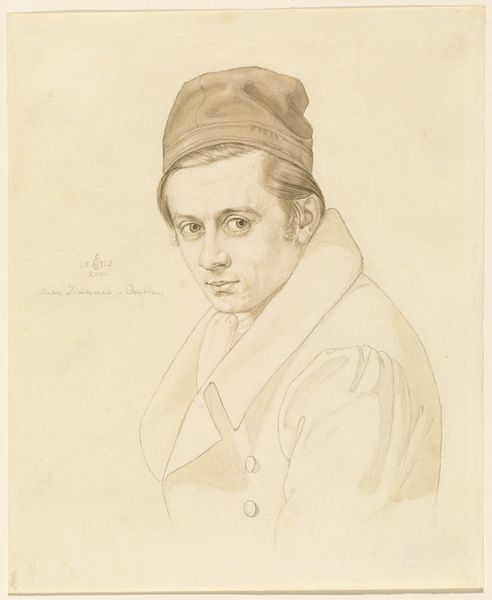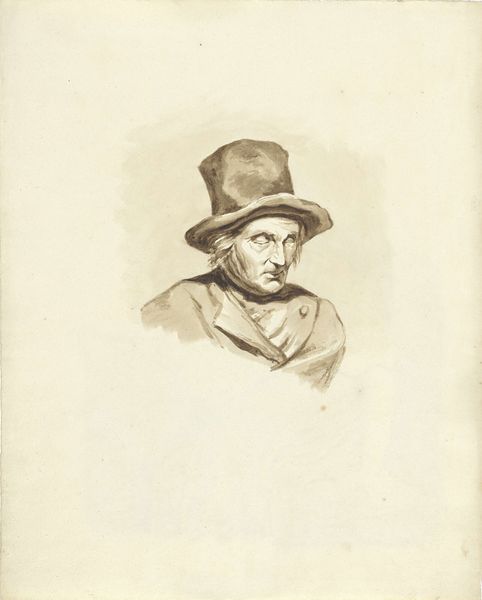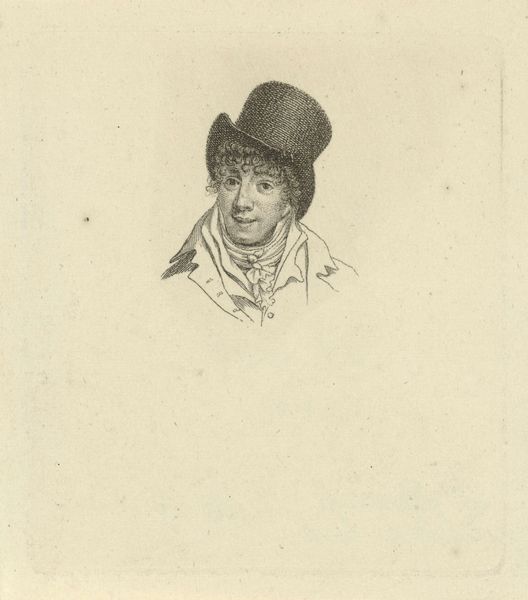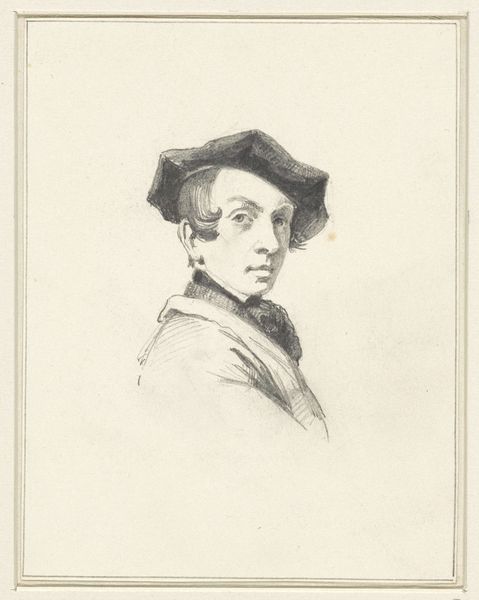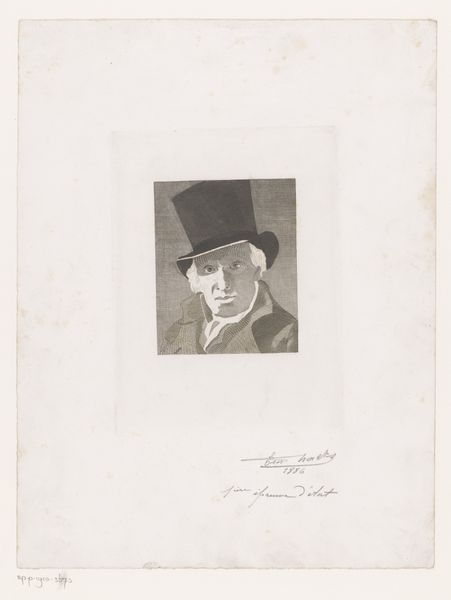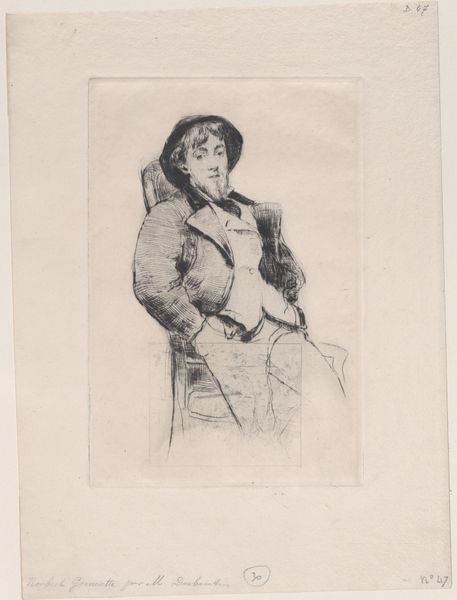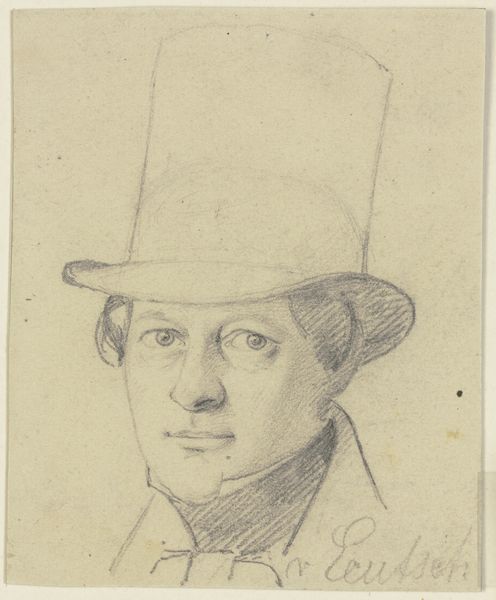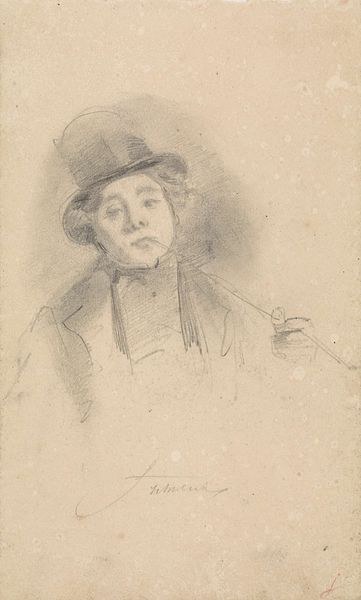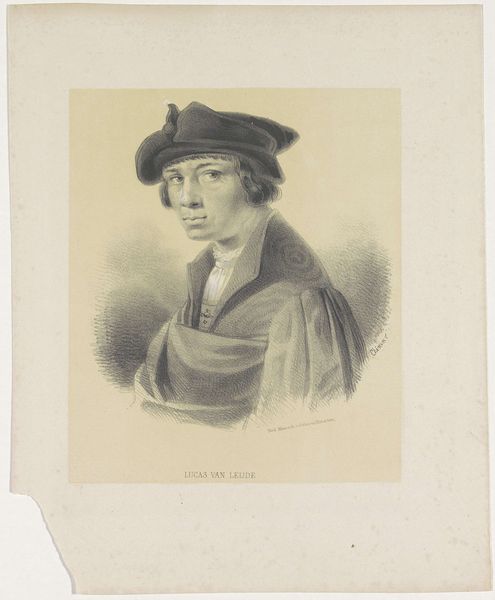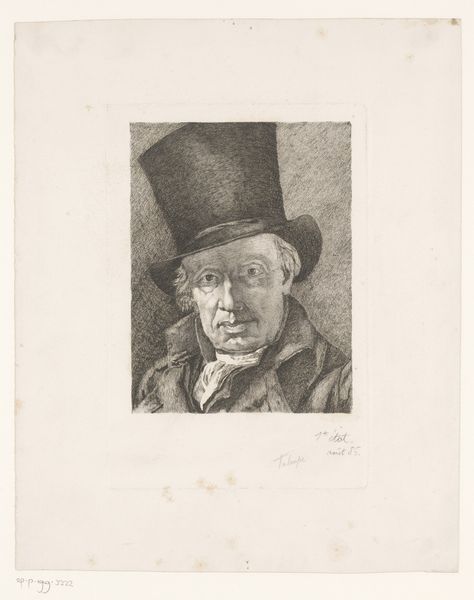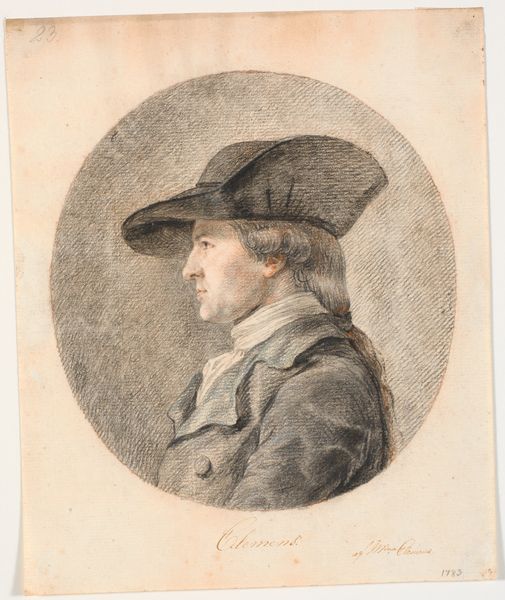
drawing, pencil
#
portrait
#
drawing
#
caricature
#
charcoal drawing
#
romanticism
#
pencil
#
portrait drawing
#
facial study
#
genre-painting
#
academic-art
Dimensions: height 301 mm, width 235 mm
Copyright: Rijks Museum: Open Domain
Editor: Here we have “Head of a Boy with a Cap” dating somewhere between 1809 and 1869, by Alexander Cranendoncq. It's a pencil and charcoal drawing. I’m struck by how gentle the light is, how softly the colors blend. It gives the portrait such a serene, almost melancholic air. What draws your eye, what do you see here? Curator: Oh, my dear, what *don’t* I see? Beyond the serene beauty, there's a hidden narrative, wouldn't you agree? The boy's gaze, averted yet steady, hints at a story untold. What dreams does he cradle beneath that cap, I wonder? And look at the way Cranendoncq uses the charcoal to give weight to the shadow and the pencil to catch the subtle planes of the boy's face! Tell me, what era does this bring to your mind? Editor: Hmm, the Rijksmuseum classifies it as Romanticism. The slight idealization, maybe? I just see him as kind of sad. Curator: Indeed! The Romantic spirit is palpable, isn't it? And your impression is perceptive. Sadness wasn’t something to shy away from in the era. But to truly grasp its depths, let’s imagine ourselves transported back. Picture the world as Cranendoncq might have seen it... the burgeoning industrial age juxtaposed with the yearning for nature, and childhood. Do you think maybe, our boy longs for a life less ordinary, a life brimming with unbound imagination? Editor: That adds a layer I hadn’t considered! I was stuck on the surface, just seeing a nice drawing of a boy who looks sad. Now, though, I see more of the yearning, the feeling of a specific historical moment. Curator: Precisely! It’s like peering through a window into the soul of an era. Never forget, my dear, art is always more than what meets the eye. Editor: Definitely. This really showed me how historical context informs our interpretations and appreciation. Thank you.
Comments
No comments
Be the first to comment and join the conversation on the ultimate creative platform.

